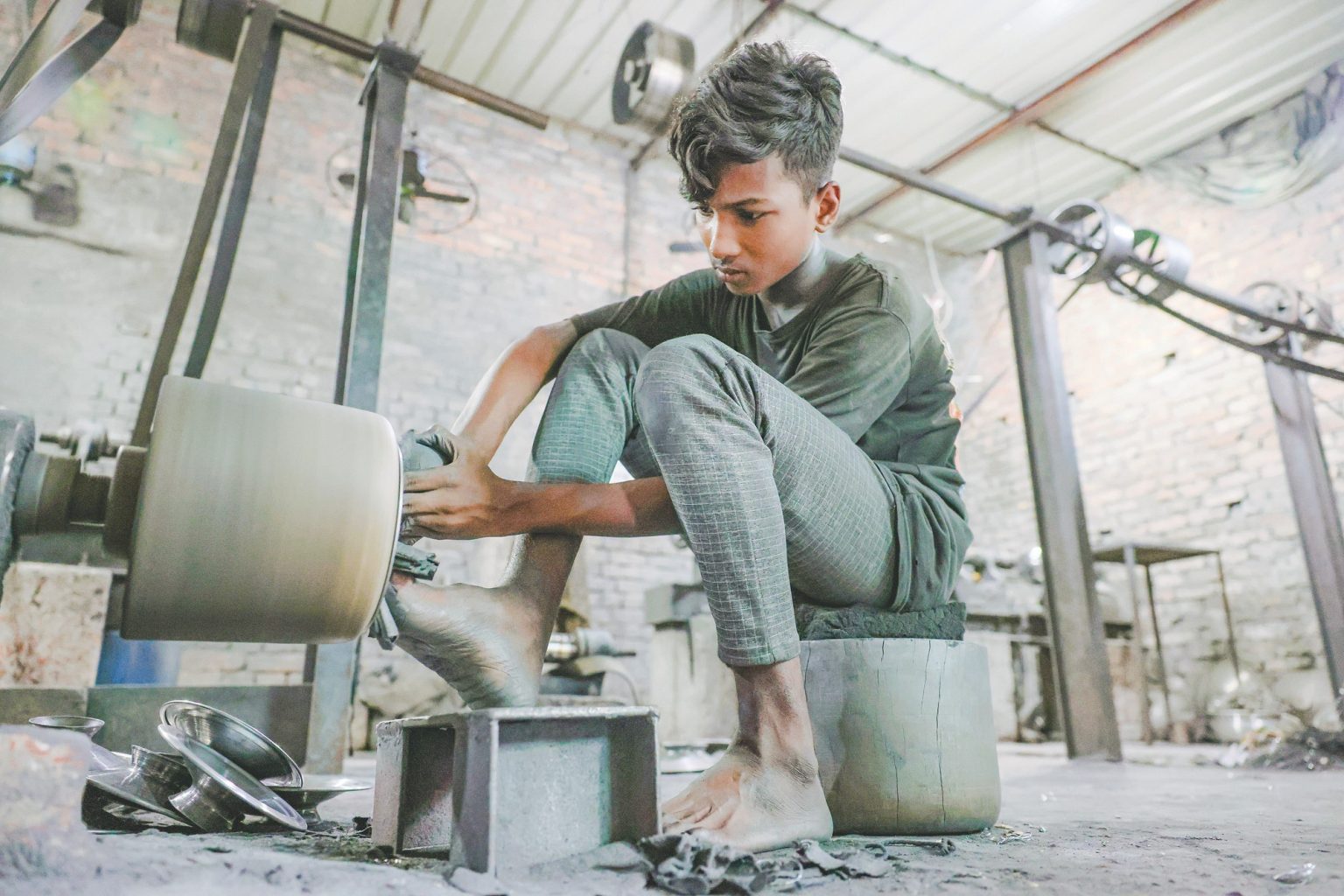By Tahrima Khan,
Imagine a generation growing up in the heart of one of South Asia’s fastest-growing economies—bright-eyed, full of potential—but quietly robbed of their intelligence before their first day at school. Not by poverty or poor schooling, but by an invisible neurotoxin: lead.
This is not science fiction. This is Bangladesh in 2025, where recent studies confirm that nearly every child in the capital city of Dhaka is exposed to dangerously high levels of lead. The long-term effects? Reduced IQ, poor school performance, increased risk of violence and crime, and an irreversible public health crisis that threatens to produce what experts are calling a “brainless generation.”
According to a recent press release from icddr,b (06 August 2025), based on a detailed blood lead level (BLL) survey, an alarming 98% of children aged 2–4 years in Dhaka were found to have elevated BLLs, far above the U.S. Centers for Disease Control and Prevention (CDC) reference threshold of 35 µg/L. The median BLL was 67 µg/L—nearly double the level associated with impaired brain development. Even more concerning, children living within 1 km of lead-emitting industrial sites—primarily unregulated battery recycling plants and metal workshops—had 43% higher lead levels than those farther away.
Lead poisoning is silent, irreversible, and catastrophic in children. It damages the brain and nervous system, lowers IQ, affects growth and development, causes behavioral problems, and can even reduce life expectancy. According to the CDC, there is no safe level of lead exposure in children—even the smallest amount can cause serious and permanent health damage.
Unfortunately, Bangladesh now ranks 4th in the world for childhood lead exposure, with an estimated 36 million children affected nationwide (UNICEF, 2020). That means over half the country’s future workforce may already be operating with reduced cognitive function. This is not just a health crisis—it’s a national development crisis.
So, where is the lead coming from?
Unlike in the past, when leaded petrol was the main culprit, today’s lead exposure comes from multiple, often hidden sources: informal battery recycling units operating in residential areas, lead-laced paints, turmeric adulterated with lead chromate, unregulated cookware, cosmetics, and even contaminated soil and dust in urban slums.
Shockingly, many of these dangerous practices continue because of regulatory failure. Informal recycling units openly operate without enforcement. Turmeric adulteration has only declined after years of advocacy and public pressure. Most critically, Bangladesh lacks a comprehensive national surveillance system to monitor lead levels in children and the environment. Public awareness remains dangerously low, especially among vulnerable communities.
In Dhaka’s poorer neighborhoods, parents don’t realize that the cheap spice, makeup, or broken battery near their home may be slowly poisoning their children. They don’t recognize the symptoms. They don’t know how to get children tested. And they don’t know whom to turn to for help.
The burden of lead exposure extends beyond health. According to studies, the economic cost of lead-related IQ loss in low- and middle-income countries like Bangladesh is estimated in the billions of dollars annually, amounting to over 6% of GDP loss (NYU & World Bank, 2022). This is money drained not by corruption or disaster, but by our collective neglect of an invisible toxin.
So, what must we do?
First, we must treat this as the public health emergency it truly is. Bangladesh must declare a national lead poisoning crisis to ensure coordinated action across ministries and unlock funding for mass screening, remediation, and enforcement.
Second, informal lead-emitting industries—especially those embedded within residential zones—must be shut down or relocated. Enforcement must be strict, sustained, and supported by technological monitoring.
Third, universal blood lead level screening for children under five must be introduced nationwide, prioritizing high-risk areas such as Dhaka, Narayanganj, and Gazipur. Frontline health workers need training to identify symptoms and report cases.
Fourth, a nationwide public awareness campaign is essential. Schools, clinics, mosques, and community centers must educate people on the dangers of lead exposure in everyday products, empowering communities to protect themselves. Behavioral change communication at the household level—covering safe food practices, hygiene, and avoidance of toxic products—can significantly reduce exposure risks.
Fifth, national standards for paint, toys, cookware, cosmetics, and spices must be updated and rigorously enforced. The government must crack down decisively on turmeric adulteration and illegal battery dumping.
Sixth, we must monitor the air we breathe. Lead particles from industrial smoke and dust remain untracked in Bangladesh’s air quality data. The Department of Environment should incorporate heavy metal surveillance into its existing monitoring grid. Low-cost air sensors, mobile lab units, and partnerships with universities can form a cost-effective system to identify environmental lead hotspots.
Policy Intervention and Government Innovation: A Way Forward
What Bangladesh urgently needs is smart governance, not just outrage. Establishing a national task force on childhood lead exposure that integrates the ministries of health, environment, industry, and education will help shift from fragmented actions to unified, measurable outcomes.
Developed countries have adopted cost-effective and scalable innovations Bangladesh can learn from:
- Portable blood lead testing kits that deliver rapid results at community health centers, reducing the need for expensive lab infrastructure.
- Low-cost dust wipe sampling techniques to identify lead hotspots in homes and schools.
- Digital data platforms to map exposure sites and track remediation progress in real time.
- Community engagement models that empower citizens to report illegal lead emissions via smartphone apps.
Bangladesh should explore partnerships with international health agencies and research institutions to adapt these affordable technologies and systems locally. South-South Cooperation (SSC) for knowledge and innovation exchange could be a good solution.
Lead poisoning is a slow, silent killer of potential. It steals from children not their lives, but their ability to live life fully. In a country striving to become a middle-income nation, can we afford a generation with compromised brain function?
The time to act is now. The brains of our children—and the future of our nation—are on the line.
The writer works in Partners in Population and Development (PPD)


